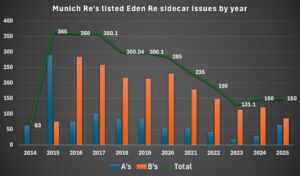Artist Jason Rhoades Once Traded an Ex-Cop Caprice for a Ferrari 328GTS

The other day, as I left an amazing show of late Jacob Lawrence works at the DC Moore Gallery in Manhattan, I spied something odd at the art gallery across the street: a yellow Fiero. Knowing a bit too much about the history of America’s first mid-engine production car, I immediately noticed something was wrong. First, it was a notchback 1984 model and yellow was only available on this model in 1988. Second, the color was too lemon creamy to be an original talbot yellow car. Intrigued, I went inside.
I Need A Reasonably Sized Car That Can Fit My Large Frame | WCSYB?
As it happened, nearly the entire Hauser & Wirth gallery on New York’s West 22nd Street was given over to cars. I immediately recognized the art as the work of Jason Rhoades, a rising star who died of heart failure suddenly at the age of 41 in 2006, who was known for his artistic affection for the automobile.
“For Jason, the car was a vehicle for making art and sort of creating new sculptures,” Ingrid Schaffner, the senior curatorial director at H&W, tells me from LA a few days after I viewed the show.
Photograph for Jason Rhoades’ ‘Swedish Erotica and Fiero Parts’ (1994)Photo: Courtesy the Estate of Jason Rhoades and Hauser & Wirth
Rhoades was into cars as metaphors, according to Schaffner. His final MFA project at UCLA involved racing a small fake Ferrari around a cardboard track while wearing a racing suit of his own design, a way of demonstrating “competition and his plan to leave art school a winner,” she says. His work racing mini-bikes around the cement bed of a drained amusement park monkey island was, according to Schaffner, about “experiencing the speed of camaraderie.” His miniature car race at Willow Springs, where car-mounted-cameras captured photos of the drivers that he printed and attached to the vehicles during the race, was, Schaffner says, about “the car as a kind of image-making machine.”
The five vehicles in this New York exhibit had all had roles in other Rhoades art projects. The Fiero had been part of Rhoades’ 1994 ersatz Ikea installation “Swedish Erotica and Fiero Parts,” explaining its mild Swedish yellow palette. He transformed a white French 1989 Liger Optima micro-car into an intimate social space for his 1997 installation “Conversation Car.” A burgundy 1996 Impala SS had been parked in the plaza of the Kunsthaus in Zurich, Switzerland for his 1998 piece “International Museum Project about Leaving and Arriving.” A white ex-law enforcement 1992 Chevrolet Caprice Classic had been part of a French exhibition in 1996 called “Traffic.” Then, there was the blue 1989 Ferrari 328 GTS.

Photograph for Jason Rhoades’ ‘Swedish Erotica and Fiero Parts’ (1994)Photo: Courtesy the Estate of Jason Rhoades and Hauser & Wirth
This Italian exotic was related to the Caprice in a way only possible in the art world. Having displayed the Chevy in Bordeaux as an art object, and retained ownership of it, Rhoades told a notable collector of his work that it was now very valuable, as valuable as the collector’s blu chiaro metallic Ferrari. Rhoades suggested a trade, and the collector agreed. “But because he lived in Switzerland,” Schaffner says, “the collector said, ‘you can keep the Caprice.’”
Being very competitive, and an Angeleno — where you are what you drive — Rhoades was seduced by the Ferrari and the status it conferred. “He said that the Ferrari is a vehicle for ambition,” Schaffneer says. “If you show up to an opening in the Ferrari, and all of your peers are driving beat-up pickup trucks, your reputation is next level.”
Rhoades’ car-as-art thing isn’t simple hucksterism. The automobile has been recognized as a sculptural art form since the earliest days of the Modernist movement, earning revered places in the permanent collection of institutions like the Museum of Modern Art, and being exhibited in fine art museums throughout the country and around the world. Art historians even theorize that the automobile’s ability to deliver individual access to a vision of the world at speed in the early 20th century was one of the core influences on early Modern art movements like Cubism and Futurism, which portrayed subjects simultaneously from varied perspectives. And the showing of mass-produced objects as art has historical precedent in Dadaist pioneer Marcel Duchamp’s ideas of the Readymade, which elevated ordinary consumer goods to artistic status, breaking down boundaries and ushering in ideas of “conceptual” art.

Jason Rhoades with ‘IMPALA (International Museum Project About Leaving and Approaching)’ (1998) at Kunsthaus Zürich
Photo: Courtesy the Estate of Jason Rhoades and Hauser & Wirth
Rhoades is clearly quoting from and riffing on these ideas. “Jason is kind of playing Duchamp at his own game. If Duchamp is going to make a urinal into a Readymade sculpture. Jason’s going to take the car and make it into a Readymade sculpture,” Schaffner says. But most interesting in this was Rhoades’ codified notions of how an automobile can make this transformation. It requires more than simply placing it in a gallery, on a plinth. “For Jason, the car was a vehicle for making art and creating new projects. And then when the project ended, the car stopped, and it became a sculpture in itself,” Schaffner says. “These five cars, they’ve all done their work, and each have their own discrete projects. And now, they’ve become sculptures in their own right.” Amen.
Of course, we couldn’t resist asking if any of the cars still run. Sadly, they don’t. They all came to New York on covered trailers and had to be rolled into place like any other sculpture. “To exhibit them in a gallery, you have to drain all their fluids,” Schaffner says. “You don’t want them leaking or exploding.”

Inside Jason Rhoades. DRIVE II, at Hauser & Wirth, New York, 22nd StreetPhoto: The Estate of Jason Rhoades and Hauser & Wirth/Thomas Barratt
True. Though that would make for an exciting next chapter in their ongoing artistic life.
Check out Jason Rhoades’ “Drive II”
Hauser & Wirth
542 West 22nd Street
New York, NY 10011




